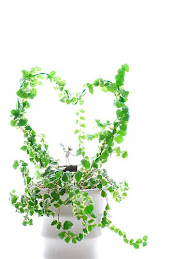
Mosaics in the ancient world
goes back some 4,000 years or more, with the use of terracotta cones pushed point-first into a background to give decoration. By the eighth century BC, there were pebble pavements, using different coloured stones to create patterns, although these tended to be unstructured decoration.By 200 BC, specially manufactured pieces ("tesserae") were being used to give extra detail and range of colour to the work.With the rise of the Byzantine Empire from the 5th century onwards, centred on Byzantium (now Istanbul, Turkey), the art form took on new characteristics.Roman images were absorbed into the typical Christian themes of the Byzantine mosaics, although some work is decorative and some incorporates portraits of Emperors and Empresses.In the west of Europe, the Moors brought Islamic mosaic and tile art into the Iberian peninsula in the 8th century, while elsewhere in the Muslim world, stone, glass and ceramic were all used in mosaics.
Medieval to modern mosaics
In the rest of Europe, mosaic went into general decline throughout the Middle Ages. However a flourishing tile industry led to mosaic tiling patterns in abbeys and other major religious buildings.In the 19th century there was a revival of interest, particularly in the Byzantine style, with buildings such as Westminster Cathedral (left) and Sacre-Coeur in Paris.
Modern mosaics
Mosaic is in a healthy state in the early 21st century, despite a tendency for it to be thought of as more the work of craftspeople than artists. Perhaps this is a difficulty in accepting the fact that mosaics often have a dual function, for example as flooring, and also because it is a very accessible, non-elitist form of creativity.
Mosaic is in a healthy state in the early 21st century, despite a tendency for it to be thought of as more the work of craftspeople than artists. Perhaps this is a difficulty in accepting the fact that mosaics often have a dual function, for example as flooring, and also because it is a very accessible, non-elitist form of creativity.
Mosaics arts In our life
Mosaic art is becoming increasingly popular - with a renaissance as an art media, but also in the home improvement industry. Whether you are piecing together mosaic tiles and glass beads for the sheer guilty pleasure of creating a piece of art - or if you are putting your skill to work as a craftsman - mosaic art is certainly a thing of beauty.
Tips for your mosiac tile
1.) Weldbond for indoor mosaics - This stuff is a great all-purpose adhesive for your mosaic tiles and glass beads to stay securely fastened to their base. It is water-resistant, but also water based (no bad fumes), and it dries clear so you won't see any nasty residue on your creation.
2.) Seal outdoor mosaics - The sun, wind, rain and all of the other elements can play havoc with both the mosaic tiles and the tile grout that you use in between them. After your grout has cured for 2 full days, seal the outdoor mosaic with tile and grout sealer from your local building center.
3.) Mosaic material is heavy - Try to avoid using lightweight or breakable material as a base for your design.
4.) Take proper safety precautions - When you build your mosaic with tiles and glass beads, there is going to be some cutting, scraping and possibly breaking involved. You may even need to use tools that break or snap the different pieces to achieve the shape that you want. It is always best to use glass cutting gloves, and use protective eyewear when you do this.
5.) Use thinset for outdoor mosaics - Thinset is a concrete-based adhesive - essentially a sticky concrete - that is the best for outdoor mosaics. Sometimes the basic adhesives can breakdown with the constant battering from the elements - unlike thinset, which is an outdoor application.
6.) Use Leponitt glass mosaic cutters - Leponitt is the number one choice in cutters for cutting glass mosaic tiles, their cutters makes cutting glass tiles easy. Leponitt is preferred by both the craft enthusiast and the professional mosaic artists.






